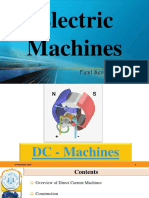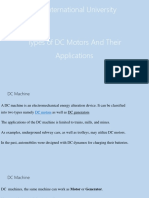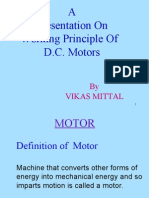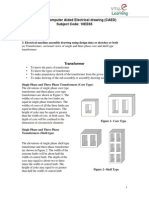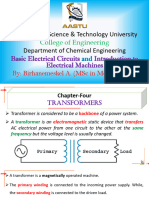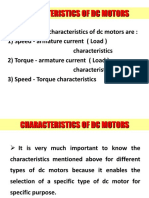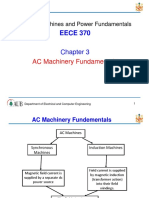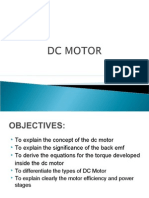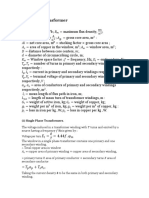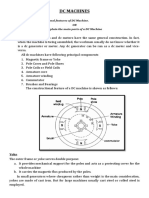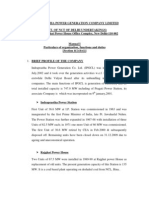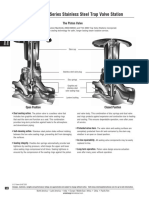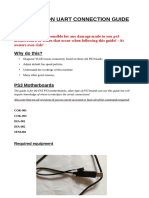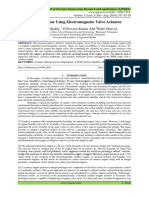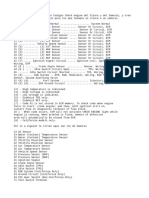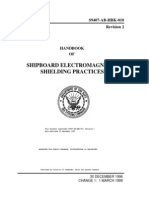100% found this document useful (2 votes)
1K views48 pagesUnit 2 & 3 EM-I (REE 402) : DC Machines
The document discusses DC machines and motors. It describes two types of armature windings - lap wound and wave wound. Lap wound armatures are used for low voltage and high current applications since they have thick wire and parallel connections. Wave wound armatures are used for high voltage and low current since they have thin wire and series connections. The document also covers DC motor principles, types of DC motors, torque production in DC motors, speed control methods, testing methods like Swinburne's test and Hopkinson's test, and applications of DC motors.
Uploaded by
Ananya SrivastavaCopyright
© © All Rights Reserved
We take content rights seriously. If you suspect this is your content, claim it here.
Available Formats
Download as PPTX, PDF, TXT or read online on Scribd
100% found this document useful (2 votes)
1K views48 pagesUnit 2 & 3 EM-I (REE 402) : DC Machines
The document discusses DC machines and motors. It describes two types of armature windings - lap wound and wave wound. Lap wound armatures are used for low voltage and high current applications since they have thick wire and parallel connections. Wave wound armatures are used for high voltage and low current since they have thin wire and series connections. The document also covers DC motor principles, types of DC motors, torque production in DC motors, speed control methods, testing methods like Swinburne's test and Hopkinson's test, and applications of DC motors.
Uploaded by
Ananya SrivastavaCopyright
© © All Rights Reserved
We take content rights seriously. If you suspect this is your content, claim it here.
Available Formats
Download as PPTX, PDF, TXT or read online on Scribd
/ 48
